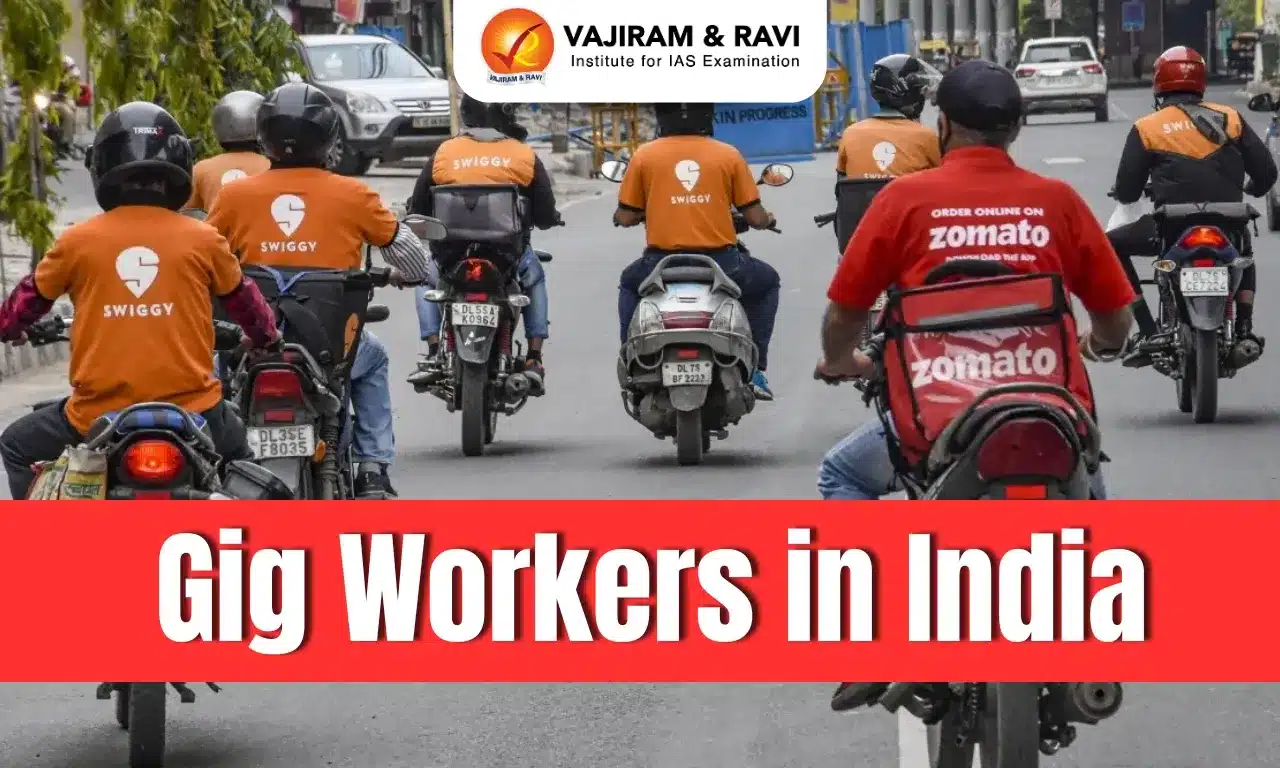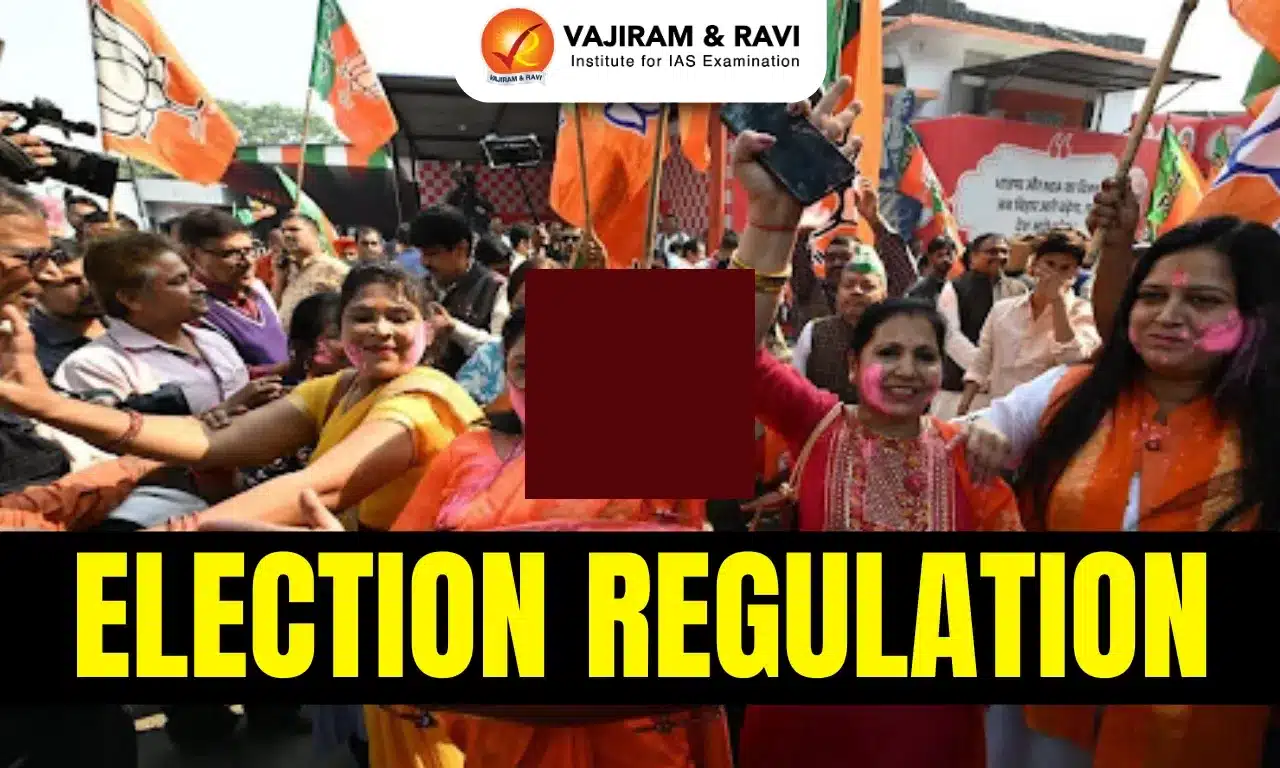Gig Economy Latest News
- India’s key labour survey, the PLFS, has come under scrutiny for failing to adequately capture the growing gig and platform workforce despite policy-level recognition and welfare initiatives.
Recognising the Growing Gig Workforce
- India’s workforce has undergone a structural transformation in recent years with the rise of gig and platform-based employment.
- From food delivery and ride-hailing to digital freelancing and home services, a new generation of workers is operating outside traditional employment frameworks.
- According to a 2022 NITI Aayog report, India’s gig workforce is projected to grow to 23.5 million by 2029-30.
- Recognising this shift, the 2025 Union Budget extended key social protection measures to gig workers.
- However, the country’s primary labour statistics source, the Periodic Labour Force Survey (PLFS), still fails to appropriately reflect this emerging segment.
Legal Definitions and Policy Intentions
- The legal groundwork for recognising gig and platform workers was laid through the Code on Social Security, 2020.
- It defines gig workers as those engaged in income-generating work outside a traditional employer-employee relationship. Platform work, specifically, involves using digital platforms to access clients or services in exchange for payment.
- Chapter I, Section 2(35) of the Code offers this broad definition but does not sufficiently distinguish gig workers from categories like the self-employed or casual labourers.
- Clause 141 of the same Code mandates the creation of a Social Security Fund for gig and unorganised workers.
- The National Social Security Board, under Section 6, is entrusted with designing and monitoring welfare schemes.
- However, for these welfare mechanisms to function effectively, they rely on robust labour statistics, which are currently lacking in granularity for gig roles.
Limitations of the Periodic Labour Force Survey (PLFS)
- Inclusion Without Visibility
- The Ministry of Statistics and Programme Implementation recently clarified in Parliament that while all economic activities, defined as activities performed for pay or profit, are included in PLFS, no specific changes have been made to identify gig workers separately.
- This means that gig workers are captured under broad and vague classifications like ‘self-employed’, ‘own-account workers’, or ‘casual labour’.
- As a result, key aspects of gig work, such as multiple app-based employment, dependence on platform algorithms, income volatility, and absence of employment contracts, remain unreported.
- This “statistical invisibility” not only underrepresents the scale of gig work but also hinders equitable access to welfare and social protection.
- Misclassification and Misrepresentation
- The existing PLFS design does not differentiate between a traditional shopkeeper and a food delivery worker operating across multiple platforms like Zomato or Swiggy.
- Both may be classified under the “self-employed” category, even though their work conditions, income sources, and risk exposures vary significantly.
- Gig work often involves:
- Lack of written job contracts
- No employer-provided safety nets
- Dependency on digital platforms and customer ratings
- Flexible but precarious task-based arrangements
These nuances go unnoticed in PLFS coding, undermining the precision of labour data used in policymaking.
Current Measures: Recognition Without Representation
- In recent years, government initiatives such as e-Shram registration, digital ID issuance, and inclusion under Ayushman Bharat PM-JAY have aimed to bring gig workers into the formal safety net.
- However, without parallel updates in labour statistics, it becomes difficult to measure the impact, monitor delivery, or identify excluded beneficiaries.
- The 2025 PLFS revision introduced some improvements, like a larger sample size, monthly estimates, and expanded rural coverage.
- But it still fails to address the core issue, the lack of a dedicated category for gig and platform-based work.
Towards Inclusive Labour Statistics
- India’s labour statistics framework must evolve to support the realities of a changing workforce. This means:
- Updating PLFS classification codes to identify gig and platform workers distinctly.
- Introducing special survey modules or time-use surveys to capture task-based work.
- Leveraging digital trace data (e.g., from platforms like Uber, Urban Company) to supplement official statistics.
- Ensuring that beneficiary data from welfare schemes feeds into national employment databases.
- Inclusive labour data is not just about representation; it is crucial for delivering effective and equitable welfare.
Source: TH
Last updated on December, 2025
→ Check out the latest UPSC Syllabus 2026 here.
→ Join Vajiram & Ravi’s Interview Guidance Programme for expert help to crack your final UPSC stage.
→ UPSC Mains Result 2025 is now out.
→ UPSC Notification 2026 is scheduled to be released on January 14, 2026.
→ UPSC Calendar 2026 is released on 15th May, 2025.
→ UPSC Prelims 2026 will be conducted on 24th May, 2026 & UPSC Mains 2026 will be conducted on 21st August 2026.
→ The UPSC Selection Process is of 3 stages-Prelims, Mains and Interview.
→ UPSC Result 2024 is released with latest UPSC Marksheet 2024. Check Now!
→ UPSC Toppers List 2024 is released now. Shakti Dubey is UPSC AIR 1 2024 Topper.
→ Also check Best IAS Coaching in Delhi
Gig Workers in India FAQs
Q1. Who is legally defined as a gig worker in India?+
Q2. Does India’s PLFS separately identify gig workers?+
Q3. Why is the current PLFS classification problematic for gig workers?+
Q4. What are the policy steps taken to support gig workers?+
Q5. What changes are needed in labour statistics to better represent gig workers?+
Tags: gig economy mains articles upsc current affairs upsc mains current affairs

















